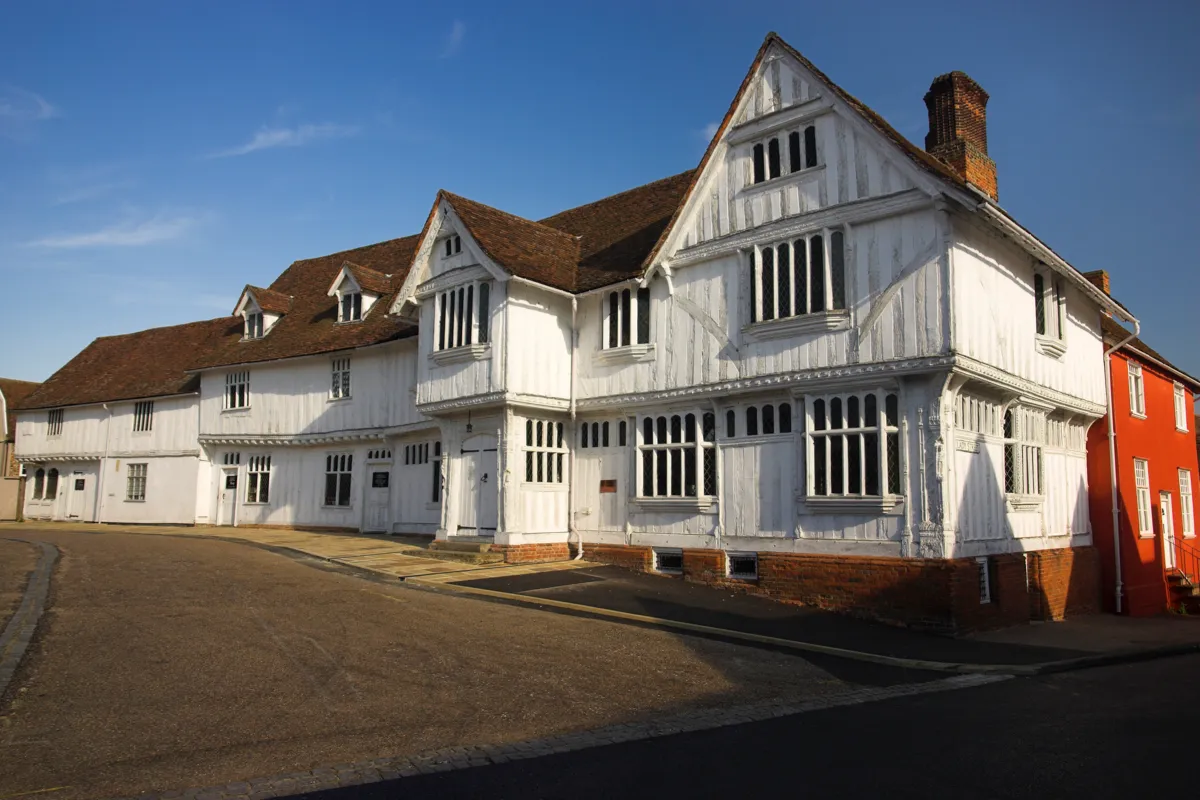Had you been walking through the streets of Lavenham in Tudor times, you may not have been surprised to hear small huddles of fashionable gentlemen speaking in a variety of European languages. The village was then at the heart of a great international trade in wool and the manufacturing of cloth, with some merchants visiting from as far away as Italy.
The Rich Clothier
The wool trade brought huge prosperity to the small village, reflected in a wealth of magnificent buildings.
The most obvious example is the Church of St Peter and St Paul, with its rich carvings, especially in the ornate porch, carrying the arms of its main benefactor, John de Vere, Earl of Oxford. The church has its roots in the very start of the Tudor dynasty – it was built specifically to celebrate the defeat of Richard III at Bosworth in 1485 and later added to by wool merchant Thomas Spring, known as ‘the rich clothier’, who paid for the very beautiful Lady Chapel.
The church tower dominates the medieval village, but walking through the streets shows even more clearly how wealthy these wool merchants became. There aren’t many places with a finer selection of timber-framed houses.
Little Hall in Market Place, for example, was originally a medieval hall house, with the main room open to the rafters. And then there is the equally opulent 16th-century Molet House on Barn Street.
The timber work of Guildhall is not only abundant but elaborately carved as well, accentuating the building’s grandeur, and the Wool Hall, altered for trading in the 17th century, is no less superb.

A Night in the Priory
After Henry VIII’s Dissolution of the Monasteries, the village’s priory was bought by Henry Copinger – grandson of Thomas Spring – who turned it into a family home. It has been beautifully restored, and has a Tudor herb garden in the grounds. Now a hotel, it is a good place to end a tour of this little town, a monument to the affluence of Tudor England.

